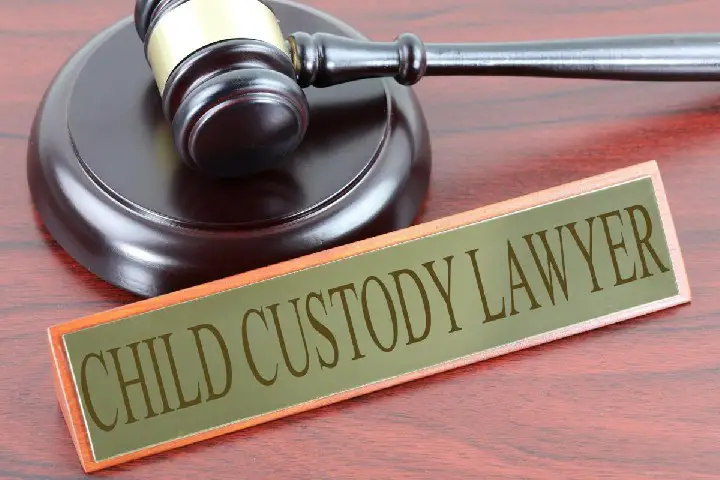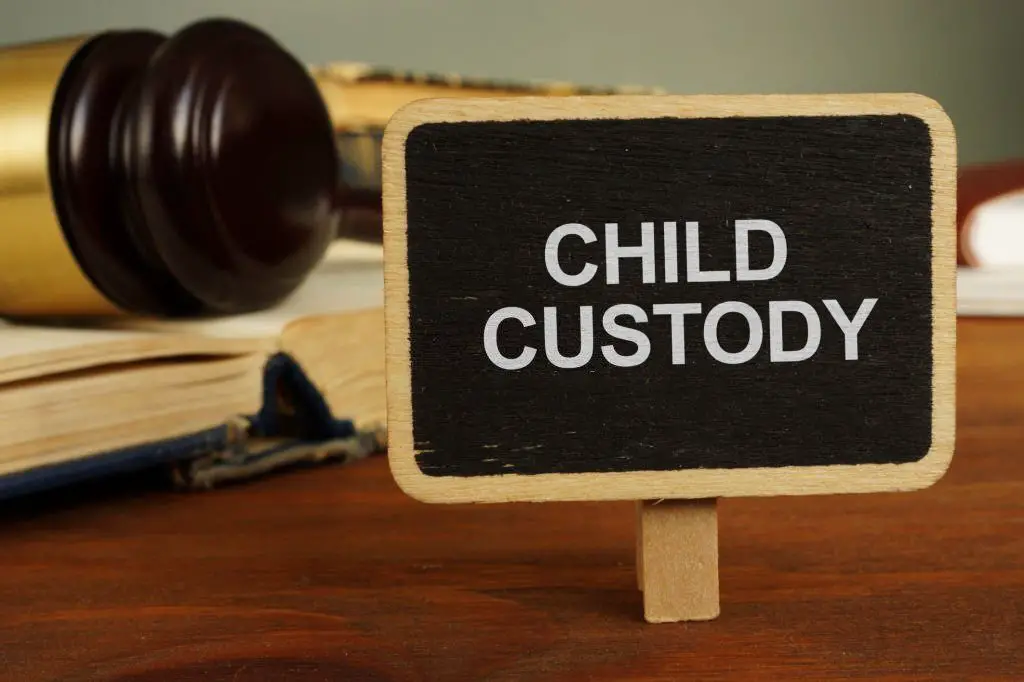
Child custody and visitation laws determine the legal and physical custody of children in cases of divorce, separation, or other family law matters. The decisions made in child custody cases can have a significant impact on the lives of both parents and children.
Having passed through it during my divorce, I will say it’s emotionally draining and should be followed carefully without mistakes.
In this article, we’ll explore the different types of child custody, factors considered in custody cases, types of visitation arrangements, and how custody and visitation disputes are resolved. We’ll also provide advice for parents navigating the often-difficult process of child custody and visitation.
Difference between Custody and Visitation
Custody and visitation are both related to the care and responsibility of children, but they refer to different aspects of parental rights and responsibilities.
Custody as one of the most important aspects of marrital settlement, refers to the legal authority and responsibility to make decisions about a child’s welfare, including matters such as education, healthcare, and religion. Custody can be either sole or joint, depending on whether one or both parents have the legal authority to make decisions for the child.
Visitation, on the other hand, refers to the right of a non-custodial parent to spend time with their child. This typically includes scheduled visitation times and may include overnight stays, holidays, and other special occasions.
In summary, custody refers to decision-making authority, while visitation refers to the non-custodial parent’s right to spend time with the child.
Types of Child Custody
Understanding child custody can be complex, and it’s important to become familiar with the legal terminology used by experts. The two main types of custody are legal and physical custody, and each has sub-branches.
Legal custody
Legal custody refers to the right and responsibility of the parent to make important decisions about the child’s upbringing, such as education, healthcare, and religious upbringing. Legal custody can be either sole or joint.
Sole legal custody
When a parent has sole legal custody of their child, they are the only one with the legal authority to make significant decisions about their child’s education, healthcare, and religious upbringing. This means that the non-custodial parent does not have any say in these important matters.
Joint legal custody
When both parents have joint legal custody, they both have an equal say in making major decisions for their children. This includes decisions about education, healthcare, and religion. It is worth noting that parents can share joint legal custody even if they do not have joint physical custody of the child.
Physical custody
This refers to where the child lives and who provides the day-to-day care for them. Physical custody can also be sole or joint and can be shared in different ways, such as equal time or primary custody with visitation. Here are the sub-branches of physical custody:
Sole physical custody
Also known as full custody, this means that the child resides primarily with one parent, while the other parent, known as the non-custodial parent, has visitation rights, which can include overnight stays. The child’s permanent residence is with the parent who has been awarded sole physical custody.
Joint physical custody
Also known as shared custody, shared parenting, or dual residence, is a type of child custody where the children divide their time between two parents’ homes. The amount of time spent with each parent is roughly equal, and the children alternate living with each parent for a specified period of time.
Bird’s nest custody
A unique arrangement where the children remain in one central location, typically the family home, and the parents rotate in and out on a set schedule. For example, one parent may reside with the children from Monday evening through Thursday, and the other parent would be with them from Thursday evening through Monday. This approach is child-centered and helps to minimize the disruption of the child’s routine during the divorce process. However, it can be expensive to maintain three separate residences.
 Factors Considered in Child Custody Cases
Factors Considered in Child Custody Cases
When making a child custody decision, courts will consider a variety of factors to determine what is in the best interests of the child. Some common factors that may be considered include:
- The child’s age, gender, and physical and mental health
- The parent’s physical and mental health
- The child’s relationship with each parent and any siblings or other family members
- The ability of each parent to provide for the child’s basic needs, such as food, shelter, and medical care
- The child’s educational and social needs, and which parent is better able to meet those needs
- The geographic proximity of the parent’s homes, and how that may impact the child’s access to each parent
- Any history of abuse or neglect by either parent or any history of domestic violence in the family
- The child’s preferences, if they are old enough and mature enough to express a preference.
Ultimately, the court will make a custody decision based on what it believes is in the best interests of the child, taking into account all of the relevant factors in the case, including child support.
Types of Child Visitation Schedule
“Visitation schedule” and “visitation arrangement” generally refer to the same thing – the plan for when and how the non-custodial parent will have access to the child. The terms are often used interchangeably, but “visitation schedule” may refer more specifically to the dates and times of visits, while “visitation arrangement” may encompass additional details such as location, supervision, and transportation.
There are several types of visitation arrangements that can be made between parents and their children after a separation or divorce. Some common types of visitation arrangements include:
Scheduled Visitation
This is the most common type of visitation arrangement, where the non-custodial parent has a set schedule for when they will see the child. This can include weekends, holidays, and specific weekdays.
Reasonable Visitation
In this type of arrangement, the non-custodial parent can visit the child at reasonable times and for reasonable durations, without a set schedule.
Supervised Visitation
When there are concerns about the safety of the child or the ability of the non-custodial parent to provide appropriate care, the court may order supervised visitation. This means that visits with the child are supervised by a neutral third party, such as a social worker or another trusted adult.
Virtual Visitation
In today’s digital age, virtual visitation has become more common. This allows the non-custodial parent to maintain contact with the child via video calls, email, text messages, or other electronic means.
No Visitation
In rare cases where the court determines that a parent poses a danger to the child, they may order no visitation between the parent and child.
Child Visitation Schedule Options
The above-listed visitation schedules can be arranged to take different options as follows:
- Overnights every other weekend
- One weeknight visit or overnight every week
- Extended visits during the summer, for example 2 to 5 weeks
- During Some holidays and birthdays
Custody and Visitation Disputes
Custody and visitation disputes can arise between parents when they are unable to agree on the terms of a custody arrangement. These disputes can be emotionally charged and difficult to resolve, but there are several options for resolving them:
Mediation for Child Custody and Visitation
Mediation is a cooperative process where a neutral third party helps parents work out a custody agreement that’s in the best interests of the child. It’s less adversarial than going to court and can improve communication and establish a positive co-parenting relationship.
What not to say in child custody mediation
During child custody mediation, it is important for parents to avoid saying things that could escalate the conflict or harm the child. Here are some things that should not be said in child custody mediation:
- Negative comments about the other parent or their family
- Criticizing the other parent’s parenting skills or decisions
- Bringing up past conflicts or disagreements
- Making threats or ultimatums
- Using the child as a bargaining chip or making demands based on the child’s wishes
- Refusing to compromise or negotiate
- Making false accusations or exaggerating issues
- Refusing to listen to the other parent’s perspective or concerns.
Parents should approach mediation with an open mind and a willingness to compromise in order to take advantage of it and reach a custody arrangement that is in the best interests of the child.
Collaborative Law for Child Custody and Visitation
In collaborative law, each parent hires their own attorney, and they work together in a series of meetings to reach an agreement on custody and visitation. This approach focuses on cooperation and problem-solving rather than litigation.
Litigation for Child Custody and Visitation
If mediation or collaborative law is not successful, the parents may need to go to court to have a judge make a custody determination. This can be a lengthy and expensive process, and the outcome is ultimately determined by the judge.
Best evidence for child custody
The best evidence for child custody is objective evidence that demonstrates a parent’s ability to provide a safe, stable, and nurturing environment for the child. This can include:
- A history of responsible parenting: Evidence that shows a parent has a history of responsible parenting, such as providing for the child’s basic needs, attending school functions, and participating in extracurricular activities.
- Stable living environment: Evidence that shows a parent has a stable living environment, such as a stable home, steady employment, and financial stability.
- Positive relationship with the child: Evidence that shows a parent has a positive and loving relationship with the child, such as testimonials from teachers, coaches, or other adults who have observed the parent-child relationship.
- No history of abuse or neglect: Evidence that shows a parent has no history of abuse or neglect of the child or others.
- Willingness to co-parent: Evidence that shows a parent is willing to cooperate and work with the other parent in co-parenting the child.

Impact of Child Custody on Child Support
What to know about Child Custody and Visitation
Defamation of character child custody
Defamation of character can be a serious issue in child custody cases, as false accusations or negative comments about a parent’s character can harm their chances of obtaining custody.
What to do in cases of third-party interference in child custody
Third-party interference in child custody refers to situations where individuals who are not the child’s parents, such as grandparents or other family members, attempt to interfere with the parents’ custody rights. This can cause tension and conflict in custody arrangements.
When third-party interference occurs in a child custody case, it is important for the parents to take appropriate steps to protect their custody rights. Here are some suggestions:
- Consult with an attorney
- Parents should create a written parenting plan that outlines the custody and visitation schedule, as well as any other important details related to the child’s care.
- Communicate with the interfering party and explain their custody rights and the importance of following the established custody arrangements.
- Seek court intervention if the interfering party continues to interfere with the custody arrangement.
Child custody and visitation decisions in domestic violence cases
Child custody and visitation decisions in domestic violence cases can be complex and require careful consideration of the safety and well-being of the child. Courts will prioritize the safety of the child and may consider factors such as the severity and frequency of the abuse, the risk of future harm, and the ability of the abuser to provide a safe and stable environment for the child. In some cases, supervised visitation or no-contact orders may be necessary to protect the child from harm.
FAQ
If I have sole custody do I have to allow visitation?
Having sole legal custody of a child does not necessarily mean that you can prevent the other parent from having visitation with the child. In most cases, the non-custodial parent still has the right to reasonable visitation, unless there are compelling reasons to restrict or deny visitation, such as a history of abuse or neglect. Ultimately, the specific visitation arrangements will depend on the individual circumstances of the case.
How to get full custody of a child without going to court?
Getting full custody of a child without going to court is generally not possible unless the other parent voluntarily agrees to relinquish their parental rights. In cases where both parents agree to the custody arrangement, it may be possible to create a parenting plan and submit it to the court for approval without a formal custody hearing.
Dont forget, there may be instances when a spouse decides to use sneaky tricks to gain child custody at the detriment of the other partner who may be better suited to take care of the well being of the child.
What happens when more than one state is involved in a child custody case?
When more than one state is involved in a child custody case, the Uniform Child Custody Jurisdiction and Enforcement Act (UCCJEA) is typically used to determine which state has jurisdiction over the case. The UCCJEA is a law that provides guidelines for determining which state’s court has the authority to make decisions regarding the custody of a child.
The law establishes a “home state” jurisdiction, which means that the state where the child has lived for the past six months is typically the state with jurisdiction over the case. However, there are exceptions to this rule, such as in cases where there is a history of domestic violence or the child has been removed from their home state due to an emergency.
Once jurisdiction has been established, the court in that state will make custody decisions based on the best interests of the child.
Conclusion
Understanding the factors that courts consider when making custody decisions, as well as these options outlines here for resolving custody disputes, can help parents protect the best interests of their children and ensure that they have a stable and loving home environment.





